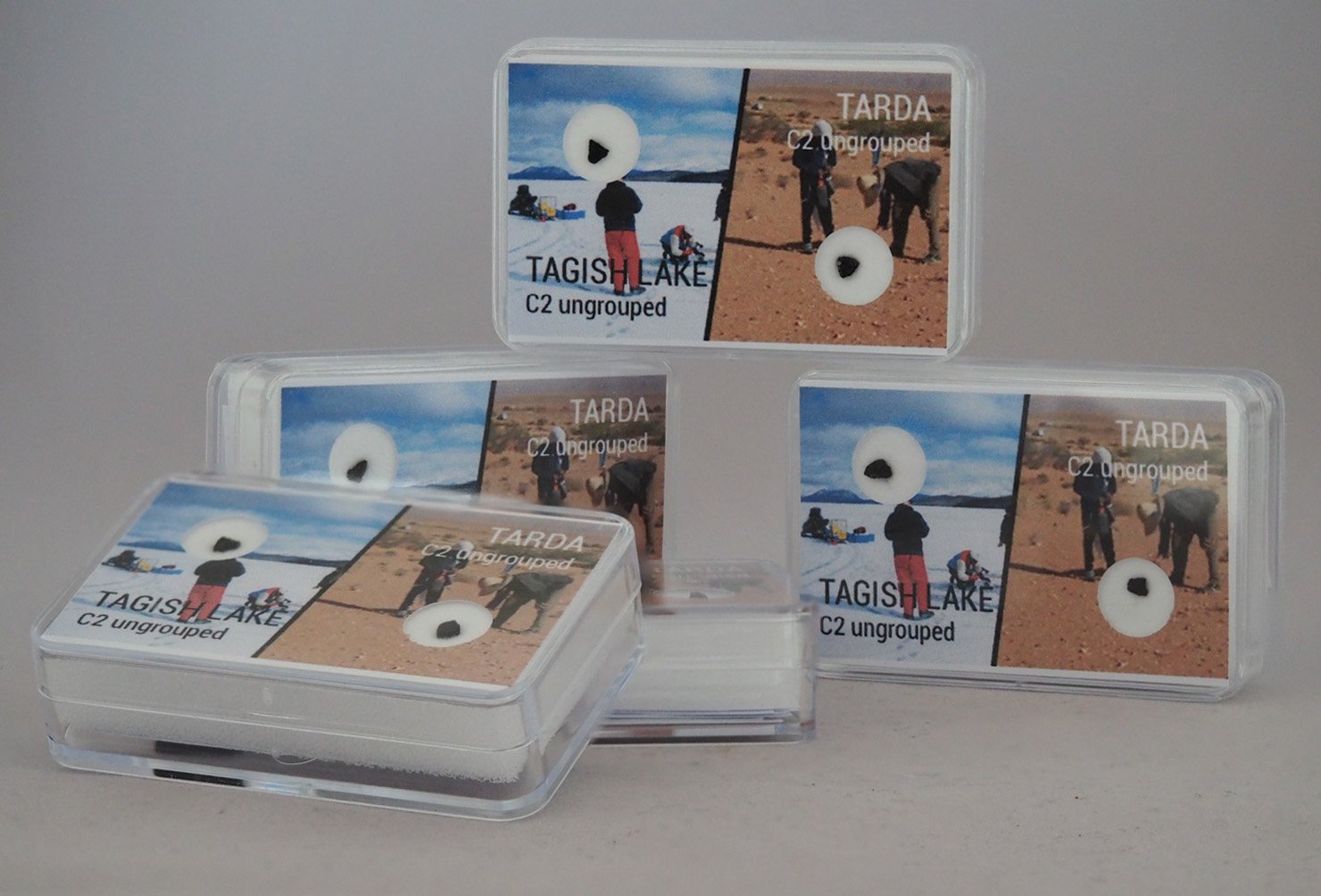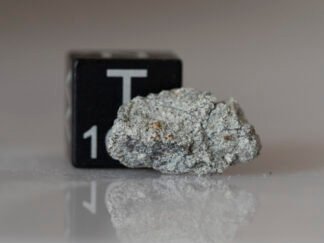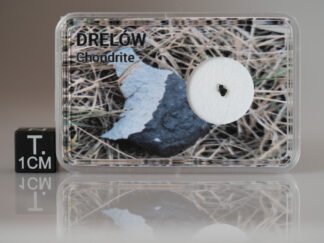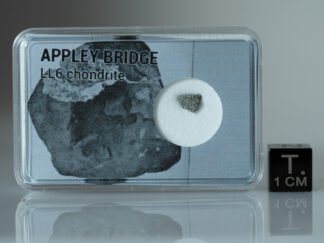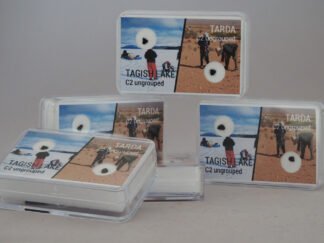Description
Tarda and Tagish Lake fragments
You get two C2 ungrouped meteorites that fell, one in 2000 in Canada (Tagish Lake) and the other, Tarda, that fell in Morocco on august 25, 2020 !
Price is for one box with a small fragment of each meteorite in it. Your box will be randomly picked up.
Photo represents typical size of the fragment you’ll get. Some variation in size can occur but are reasonable.
You get two C2 ungrouped meteorites that fell, one in 2000 in Canada (Tagish Lake) and the other, Tarda, that fell in Morocco on august 25, 2020 !
Price is for one box with a small fragment of each meteorite in it. Your box will be randomly picked up.
Photo represents typical size of the fragment you’ll get. Some variation in size can occur but are reasonable.
The Tagish Lake C2 (ungrouped) carbonaceous chondrite fall of January 18, 2000, delivered about 10 kg of one of the most primitive and physically weak meteorites yet studied. In this
paper, we report the detailed circumstances of the fall and the recovery of all documented Tagish Lake fragments from a strewnfield at least 16 km long and 3 to 4 km wide. Nearly 1 kg of “pristine” meteorites were collected one week after the fall before new snow covered the strewnfield; the majority of the recovered mass was collected during the spring melt. Ground eyewitnesses and a variety of instrument-recorded observations of the Tagish Lake fireball provide a refined estimate of the fireball trajectory. From its calculated orbit and its similarity to the remotely sensed properties of the D- and P-class asteroids, the Tagish Lake carbonaceous chondrite apparently represents these outer belt asteroids. The cosmogenic nuclide results and modeled production indicate a prefall radius of 2.1–2.4 m (corresponding to 60–90 tons) consistent with the observed fireball energy release.
paper, we report the detailed circumstances of the fall and the recovery of all documented Tagish Lake fragments from a strewnfield at least 16 km long and 3 to 4 km wide. Nearly 1 kg of “pristine” meteorites were collected one week after the fall before new snow covered the strewnfield; the majority of the recovered mass was collected during the spring melt. Ground eyewitnesses and a variety of instrument-recorded observations of the Tagish Lake fireball provide a refined estimate of the fireball trajectory. From its calculated orbit and its similarity to the remotely sensed properties of the D- and P-class asteroids, the Tagish Lake carbonaceous chondrite apparently represents these outer belt asteroids. The cosmogenic nuclide results and modeled production indicate a prefall radius of 2.1–2.4 m (corresponding to 60–90 tons) consistent with the observed fireball energy release.
